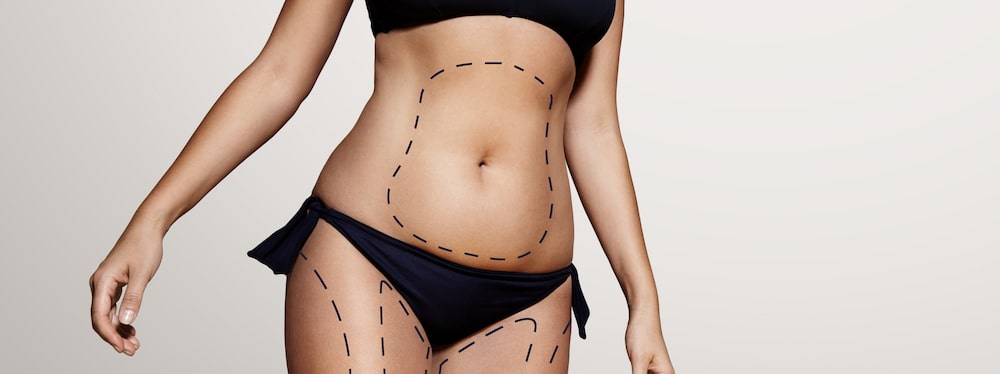
Liposuction is one of the most popular cosmetic surgery treatments currently performed in the United States. As recently as 2019, it was ranked second behind breast augmentation according to the American Society of Plastic Surgeons. Liposuction is performed to get rid of stubborn fat in certain areas of the body. This stubborn fat does not respond to traditional diet and exercise so patients turn to liposuction to help eliminate the fat from the targeted area of the body. If you are thinking about undergoing liposuction, take a look below to see what you should expect during the recovery process.
Once you have a liposuction procedure, the recovery process from the surgery will begin. In general, it can take five days to a week before you can return to work and about four to six weeks before you can resume exercising and other physical activities.
Any swelling and bruising after the surgery can last for three months and the final results will be visible about six months after the surgery.
Immediately after the procedure, you will need to wear a compression garment that helps to reduce the amount of swelling that is present in the treated area. The compression garment helps to speed up the draining of anesthetic fluid from the area where the surgery was performed. The garment also works to help the skin maintain its new contour. You will need to wear the compression garment for about four to six weeks (the number of weeks depends on the amount of liposuction performed and the individual person) and should only remove it when instructed by the doctor.
If you are experiencing any pain after liposuction, you can take anti-inflammatory medications to help relieve the pain.
Be sure and get plenty of rest and don’t overdo it as this might strain the area where any incisions are located. Do not attempt strenuous exercise or activities until you are cleared to do so by your doctor. If you try to do “too much too soon”, you can cause extra swelling, discomfort and pain to occur.
Please be aware that there are some common complications that can occur after undergoing liposuction:
The general purpose of liposuction is to provide a better contour to certain areas of the body by reshaping or achieving a slimmer look to the body through the elimination of stubborn, excess fat.
Cosmetic Town TV has a closer look at the liposuction process in order to answer common questions about the procedure:
Various types of liposuction procedures are available and they include:
While liposuction is not considered to be a weight loss procedure, it does remove fat from the body. Some of the most common areas of the body where liposuction is performed include the thighs, back, chin, calves and abdomen.
The surgeon make a small incision, or a series of incisions, in the targeted area of the body in order to insert a cannula into the section of the body being treated by liposuction. A high-pressure vacuum is attached to the cannula so the desired amount of fat can be removed from the body.
If you are interested in undergoing liposuction, you should schedule a consultation appointment with a board-certified surgeon that is experienced in performing the treatment. The doctor can examine you to determine is you are healthy enough to have the procedure. The doctor will also discuss your desired results with you to determine the best liposuction technique to perform and to set realistic expectations about the final results you can expect to see.
- MA